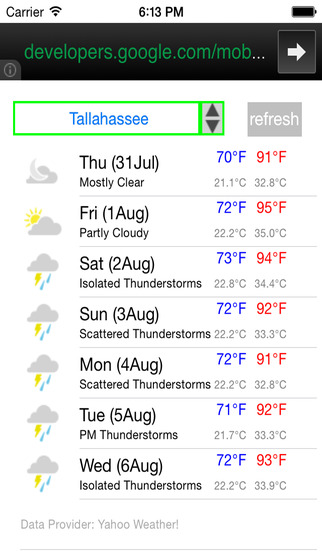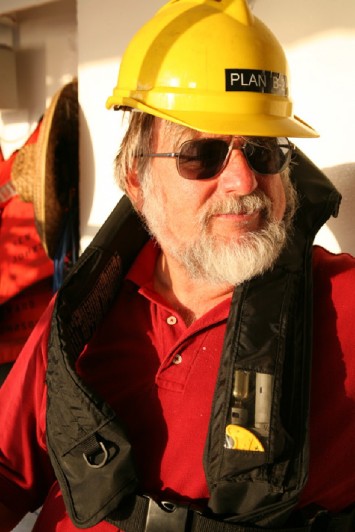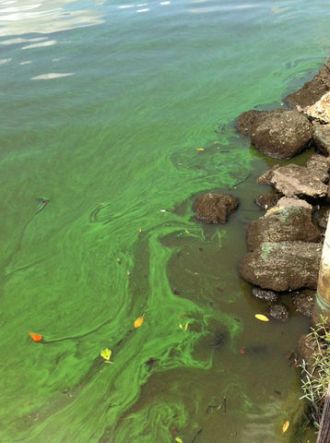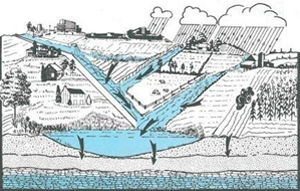Conventional Weather App
WHEN WE WATCH THE WEATHER REPORT ON TV OR ACCESS IT ON OUR COMPUTER OR SMARTPHONE it’s obviously all about current and preditive weather: thunderstorms, rain, sun, clouds, temperatures and wind.
Can you imagine if the traditional weather report was expanded to provide current and predictive water quality statistics on the Indian River Lagoon? How valuable would that be to a fisherman who’s livelihood is based on fishing for Pompano, Tuna or Snook; or someone operating a recreational business renting out kayaks?
It would be, for example, based on historical computer modeling, to know, on a real-time basis how a cold front has affected water quality and predict water quality three days out after the cold front.
That’s the dream of M. Dennis Hanisak, Ph.D, Research Professor, Director of Education and Marine Ecosystem Health at HarborBranch (Florida Atlantic University).
Dennis Hanisak, Ph.D
According to Dr. Hanisak, there could be someone out there right now in Silicon Valley developing computer models using the real-time, high-accuracy and high-resolution water sampling and quality monitoring data from HarborBranch’s LOBO system to invent such an App.
The reason the techie in Silicon Valley could be inventing a water quality App is that HarborBranch decided not to restrict use of the data. They considered having interested parties register to use the data but whenever you have to resister for something it deters you from doing so.
LOBO’s are deployed at nine sites in the IRL and St. Lucie Estuary (SLE) and a tenth site will also be deployed in the SLE by the end of 2015. All of these sites are ecologically important because of the dynamic interface between oceanic water from the inlets with freshwater inputs from the river, canals, and Lake Okeechobee.
Dr. Hanisak was doing research in the Gulf of Mexico during Hurricane Ericka and was able, using the Internet, to track wind on and water quality in the Lagoon from there.
Had LOBO’s been deployed back in 2011 they would have provided critical data on what caused the unprecedented loss of seagrass from the production of algae blooms.
Algae Blooms in the Indian River Lagoon (Photo credit: Jan Adams)
Dr. Hanisak believes that there was a 60% loss of seagrass in 2011 and as of the beginning of this year only 10% of the 60% has returned.
“LOBO’s are key to what lives in the Lagoon,” he says.
But dreams aside, right now Dr. Hanisak and his team area focused on making the LOBO’s “reliable and making it easy for users to access the data.”
Since the Florida Department of Environmental Protection (FDEP) partially funded development of the LOBO systems to utilize the data, we have asked them how they plan to use it but have been able to receive a reply.
Here is how Dr. Hanisak believes the data is being utilized:
FDEP has two programs to monitor water quality called “Basin Management Targets (BMT),” and “Total Maximum Daily Loads (TMDL).”
Both appear to work together.
TMDL’s are water quality targets, based on the State of Florida’s quality standards for specific pollutants, such as excessive nitrogen and phosphorus.
Water flows downhill across parking lots, farms and yards into reservoirs; including ground water aquifers. (Image credit: Northwest Florida Water Management District)
FDEP is also responsible for “policing” watersheds, an area of land in which all of the water that enters it, drains into a common waterbody. Also known as a drainage basin, it can be thought of as a “funnel” that collects surface water and ground water and drains it into a single stream, lake, ocean, or other reservoir. Hills and ridges usually separate one watershed from the next.
Without knowing all those people and organizations who utilize the data, Dr. Hanisak also believes users include environmental research scientists, teachers and students. It enables researchers to follow environmental changes in the IRL, assist resource and planning managers to make informed decisions, model and correlate environmental data to biological, chemical and physical phenomena, and contribute to education and public outreach on the lagoon.
At HarborBranch itself, Principal Investigator Brian E. LaPointe, Ph.D is using LOBO data to focus on the impact of septic tank runoff.
Dr. Lapointe has advised the U.S. Environmental Protection Agency, National Oceanic and Atmospheric Administration, State of Florida and the governments of Monroe County (Florida Keys), Palm Beach County, Lee County, Bahamas, Tobago, Turks & Caicos, Jamaica, Bonaire, Curacao, Martinique and St. Lucia on development of water quality monitoring programs for assessing the impacts of land-based pollution.
Dr. Hanisak is hoping to hold a “user group” forum in December, 2015 at HarborBranch where he will bring together all those who use LOBO data, all those who provide similar data, such as the Ocean Research and Conservation Association (ORCA) with their Kilroy systems; essentially any one or any organization that wants to be involved and benefit from the data.
The purpose of the forum is to “brainstorm,” exchange ideas and seek out ideas how all those providing data can improve their reporting; such as making software changes to a user interface.
Maybe that techie from Silicon Valley will be there with his/her venture capital investor.
“Bottom line,” says Dr. Hanisak, “it’s really not all about monitoring the water quality, but finding out where the pollutants come from. It’s about what causes the bad water quality.”
If you, too, want to access LOBO’s real-time water quality data follow this link:




Great idea, but for this to be truly useful, it needs to provide guidance. If it is just LOBO data, few folks will know what to do with the information. Also bacterial load is a serious issue, and I didn’t see anything on that, but I may have missed it.
LikeLike
Unfortunately, you got the researcher’s name wrong. It’s Hanisak not Hasinak.
LikeLike
Thank you Kim. Just fixed it.
LikeLike
Pingback: Vibrios Bacteria in the Indian River Lagoon are Naturally Occurring; Not the Result of Human Pollution | Vero Communiqué
Thanks a lot for great article, I found it very interesting and useful for me.
LikeLike
I like this because any time you can educate and engage the public there is a greater chance of political action. If regular people see what is harming the lagoon, such as agriculture run-off like pesticides and phosphorus and nitrogen, and/or septic tank leakage, etc. they will be more inclined to demand political activity to prevent such pollution. Providing the data from Kilroy’s and LOBO’s directly to the public is a great step to restoring the lagoon.
LikeLike
Pingback: Algal Blooms in Florida Threaten Wildlife